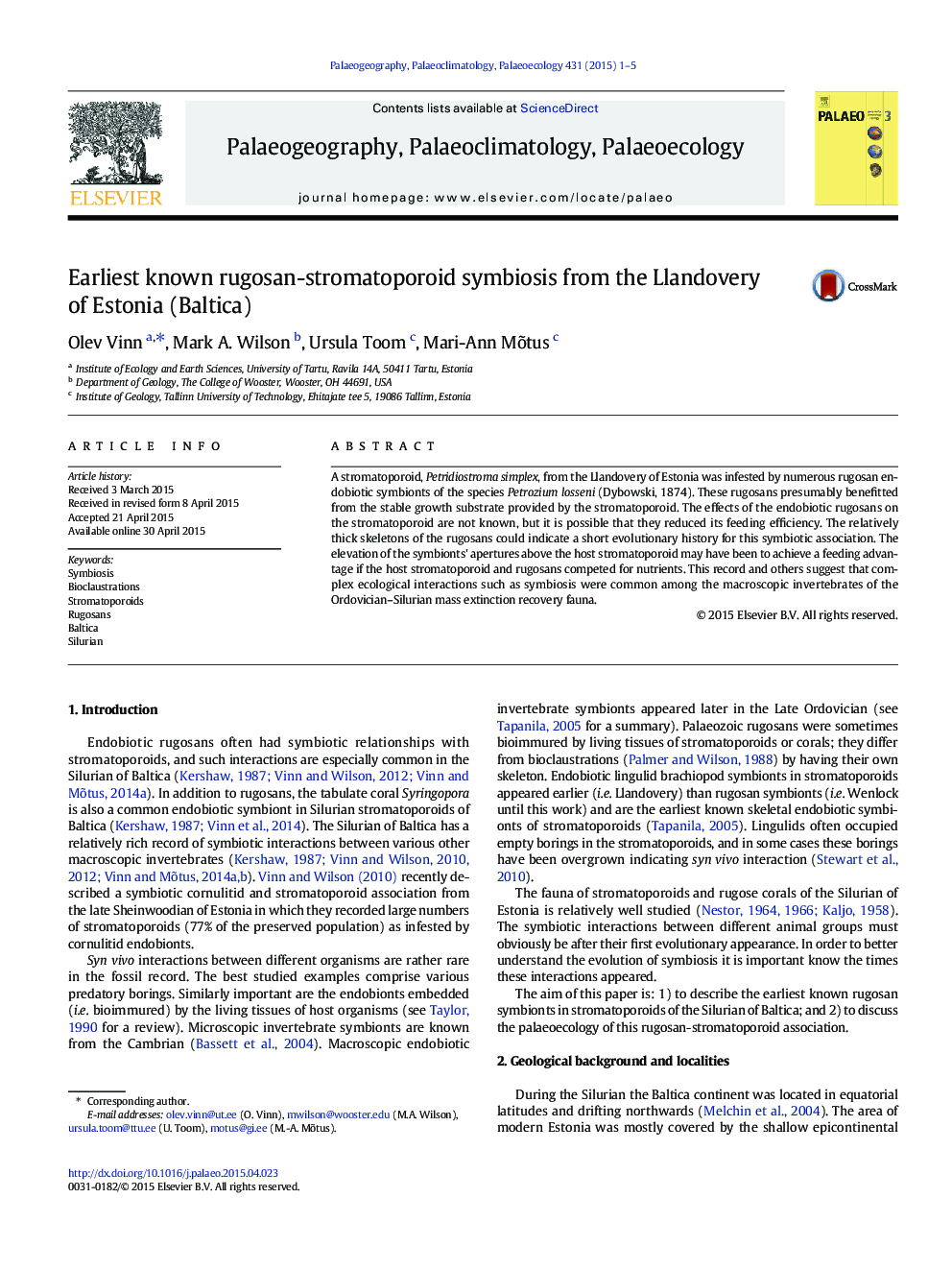| Article ID | Journal | Published Year | Pages | File Type |
|---|---|---|---|---|
| 4465953 | Palaeogeography, Palaeoclimatology, Palaeoecology | 2015 | 5 Pages |
•Earliest symbiotic rugosans in stromatoporoids appear in the Llandovery.•Endobiotic rugosans benefitted from stable substrate.•This symbiotic association has a short evolutionary history.•Symbiosis was common among Ordovician–Silurian mass extinction recovery fauna.
A stromatoporoid, Petridiostroma simplex, from the Llandovery of Estonia was infested by numerous rugosan endobiotic symbionts of the species Petrozium losseni (Dybowski, 1874). These rugosans presumably benefitted from the stable growth substrate provided by the stromatoporoid. The effects of the endobiotic rugosans on the stromatoporoid are not known, but it is possible that they reduced its feeding efficiency. The relatively thick skeletons of the rugosans could indicate a short evolutionary history for this symbiotic association. The elevation of the symbionts' apertures above the host stromatoporoid may have been to achieve a feeding advantage if the host stromatoporoid and rugosans competed for nutrients. This record and others suggest that complex ecological interactions such as symbiosis were common among the macroscopic invertebrates of the Ordovician–Silurian mass extinction recovery fauna.
